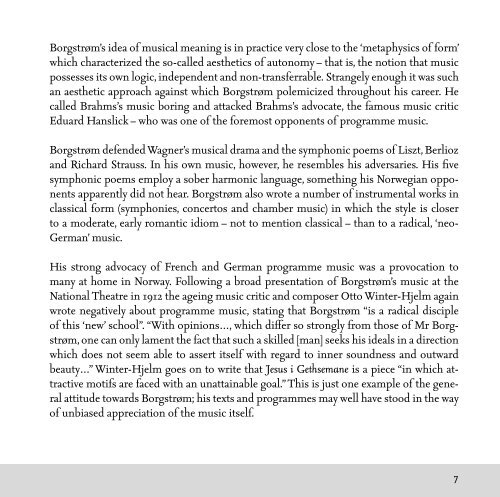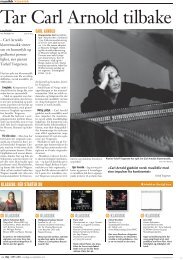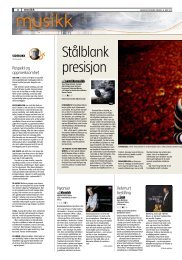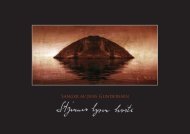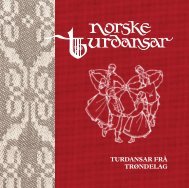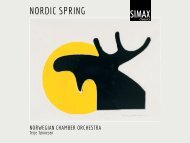Hjalmar Borgström
Hjalmar Borgström
Hjalmar Borgström
You also want an ePaper? Increase the reach of your titles
YUMPU automatically turns print PDFs into web optimized ePapers that Google loves.
Borgstrøm’s idea of musical meaning is in practice very close to the ‘metaphysics of form’<br />
which characterized the so-called aesthetics of autonomy – that is, the notion that music<br />
possesses its own logic, independent and non-transferrable. Strangely enough it was such<br />
an aesthetic approach against which Borgstrøm polemicized throughout his career. He<br />
called Brahms’s music boring and attacked Brahms’s advocate, the famous music critic<br />
Eduard Hanslick – who was one of the foremost opponents of programme music.<br />
Borgstrøm defended Wagner’s musical drama and the symphonic poems of Liszt, Berlioz<br />
and Richard Strauss. In his own music, however, he resembles his adversaries. His five<br />
symphonic poems employ a sober harmonic language, something his Norwegian opponents<br />
apparently did not hear. Borgstrøm also wrote a number of instrumental works in<br />
classical form (symphonies, concertos and chamber music) in which the style is closer<br />
to a moderate, early romantic idiom – not to mention classical – than to a radical, ‘neo-<br />
German’ music.<br />
His strong advocacy of French and German programme music was a provocation to<br />
many at home in Norway. Following a broad presentation of Borgstrøm’s music at the<br />
National Theatre in 1912 the ageing music critic and composer Otto Winter-Hjelm again<br />
wrote negatively about programme music, stating that Borgstrøm “is a radical disciple<br />
of this ‘new’ school”. “With opinions…, which differ so strongly from those of Mr Borgstrøm,<br />
one can only lament the fact that such a skilled [man] seeks his ideals in a direction<br />
which does not seem able to assert itself with regard to inner soundness and outward<br />
beauty…” Winter-Hjelm goes on to write that Jesus i Gethsemane is a piece “in which attractive<br />
motifs are faced with an unattainable goal.” This is just one example of the general<br />
attitude towards Borgstrøm; his texts and programmes may well have stood in the way<br />
of unbiased appreciation of the music itself.<br />
7


